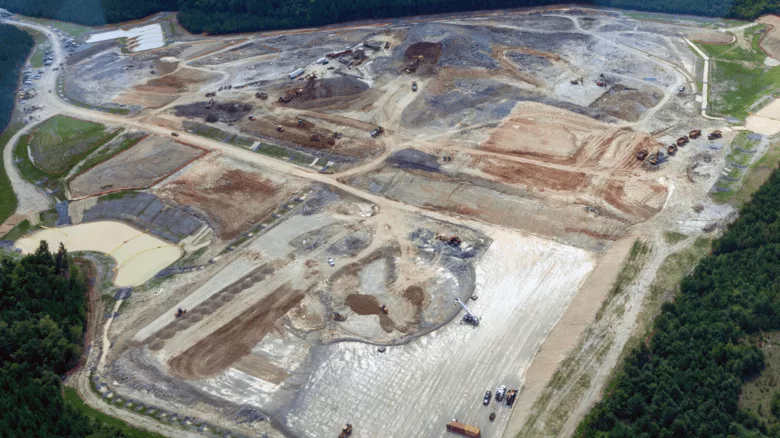How the Money Stopped at One Environmental Nonprofit
The Blue Ridge Environmental Defense League always worked hard to be a good steward of public funds.

Story courtesy of Inside Climate News, written by Lisa Sorg
Since late November, when the Blue Ridge Environmental Defense League in North Myrtle Beach, South Carolina, began tapping into a $365,000 grant as part of the Inflation Reduction Act, payroll had gone smoothly.
Each month, BREDL’s accountant would send the Environmental Protection Agency timesheets, and she would draw down the funds to pay the nonprofit group’s two project managers, as well as mileage and operational expenses related to an ambitious air monitoring project in marginalized communities.
Until Monday.
“She tried more than once, and it was as if the grant disappeared,” said Therese Vick, BREDL’s research director, who works in North Carolina.
“No accounts found matching that criteria,” read the screenshots reviewed by Inside Climate News.
Without the money, BREDL’s project was in limbo. The group has also spent thousands of dollars of its own money on the project.
“This is a blow,” Vick said. “We have worked really hard to be accountable for this grant.”
A hallmark of the Biden administration, Congress passed the Inflation Reduction Act in 2022. It allocated $369 billion in federal funding for environmental projects, renewable energy and climate change mitigation. Nearly $20 billion went to North Carolina, passed through largely by the EPA.
But since President Donald Trump took office Jan. 20, there has been widespread confusion over the status of IRA money for projects both large—like those administered by the N.C. Department of Environmental Quality—and small, like BREDL’s.
President Trump issued an executive order freezing all money authorized by the IRA and the Bipartisan Infrastructure Law. Even after a federal judge blocked the order and forced the president to rescind it, the administration continued to issue conflicting statements about the availability of the funds.
An EPA spokesperson did not respond to direct questions about the IRA funding and instead provided a statement: “Neither EPA nor the Department of Justice can provide further information on pending litigation.”
The U.S. Department of Treasury’s site devoted to the IRA was down Feb. 5, with the message “Page Not Located.”
But a letter dated Feb. 4 from EPA acting Chief Financial Officer Gregg Tremi said the “agency’s financial system will now enable the obligation of financial assistance”—funds can be withdrawn—for IRA programs, Superfund, Brownfields and state and tribal assistance grants. “The disbursement of funds connected to this notice will continue.”
Tremi’s letter said his office, as well as the Office of General Counsel and the Office of Mission Support, “will keep the community updated on this issue.”
Lawyers for Good Government, which provides nonprofits, state and local governments and affected communities with legal resources, has fielded more than 100 calls from people concerned about their funding, the organization said in a press release.
Jillian Blanchard, the group’s vice president of Climate Change and Environmental Justice, issued a statement: “In spite of the federal judges pausing Trump’s unlawful funding freeze, many organizations remain in real-time disarray. Hundreds are still unable to access the funding they were promised, leaving workers unpaid and critical projects unfinanced, even if the projects are already in progress or had funds already earmarked.”
In a slew of executive orders issued shortly after President Trump’s inauguration, the president targeted environmental justice projects for defunding. He revoked a half dozen of former President Joe Biden’s executive orders that advanced equity for low-income and non-white communities that are exposed to a disproportionate number of pollution sources.
An N.C. DEQ spokesperson said the agency “is closely watching any federal actions that may change the operations of the [environmental justice] program. As of this time, funding through these programs remains available.”
Monitoring Greenhouse Gases and Other Pollution
BREDL works on environmental issues throughout the Southeast. Its 20 local chapters focus on natural gas pipelines, fracking, coal ash, air pollution and PFAS, mostly in environmental justice communities.
The group applied for an IRA grant to conduct long-term air monitoring for various pollutants, including total volatile organic compounds, nitrogen oxides and very fine particulate matter. Exposure to PM 2.5, as it’s known, has been linked to myriad health disorders: heart and lung disease, high blood pressure, premature birth and Alzheimer’s disease.
BREDL’s grant writer had labored over the application. The group had to wait several months—what seemed to be an interminable amount of time—before learning it had been awarded a grant. For BREDL, $365,000 is a significant amount of money, equivalent to about a third of its total revenue for 2022, according to the group’s tax filings.
“It is a complicated thing, grant-writing, and takes many, many hours,” Vick said. “We were delighted.”
The employees trained with EPA and state environmental officials on the equipment, housed in a trailer on private property. Each day, the air monitor sends data to BREDL, and Vick reviews hundreds of rows of information, which includes pollutant levels, wind direction and wind speed. If there are pollution spikes or anomalies, the group reports information back to the communities where the monitor is located.
The group plans to eventually establish air monitoring stations in seven communities. It’s considering an eighth, near the Moriah Energy Center, a 50-million-gallon liquified natural gas facility under construction in southeast Person County.
BREDL’s leadership has assured employees they will keep their jobs, despite the financial uncertainties, Vick said, which are covered by other grants and donations. Their accountant will keep trying to withdraw the funds. “Our intention is to continue the project as long as we can.”
Looking for a reprint of this article?
From high-res PDFs to custom plaques, order your copy today!






